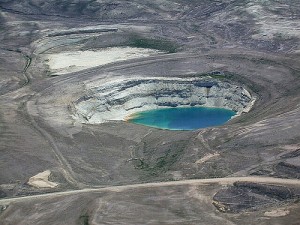Here are the results that we obtained from online survey that we have posted on November 28, 2011. This is important in bringing public awareness and opinion on builds nuclear power plant in Malaysia. It will help government to make decision to build or abort their plan to generate electricity using nuclear energy.
Click on the image to zoom in.
Click on the image to zoom in.

The survey has 109 respondent which concentrate on young generation (17-30). The nuclear power plant is plan to be start operate in 2025*. Hence, the young generation now will run the operation and maintenance of the nuclear power plant in the future.
*Source: TNB,Nuclear Roadmap For Malaysia, 2009
For question 1 in the survey, it shows that most of the respondent (52%) agree to use nuclear energy to generate electricity in Malaysia. While 33% against the plan and 15% is neutral about it.
For question 2, majority (32%) of the respondent choose continues energy supply to generate electricity as the reason for them to support nuclear energy. Beside that, the reason for other respondents choose to support is to reduce carbon emission (22%), to keep tariff electric low (16%) and other reason (6%). Yet there are still 24% didn't support it.

For question 3, it can be seen that most people are concern about the nuclear safety. This is because if an accident happened at a nuclear power plant, it can affect in a huge area. This area could be known as "black area" because no one could be living there anymore. An example of this situation can be seen at Chernobyl, Ukraine. Till then, there is no human being live in that area.
For question 4, it shown that people are willing to pay up to 5% tariff. Not many people are willing to pay 10% tariff because they might think it is too expensive to spend on renewable energy.This is why nuclear could be considered as one of the main source energy energy due to the energy that it could be generated.It can be consider low in cost because nuclear can generate huge amount of energy with a small amount of uranium and the power plant does not need a huge area of land.
For question 5, this bar chart shows that the source of energy that most people prefer is solar. second is the hydro and next is wind and nuclear. From this chart, we can conclude that most people may not know the advantages of nuclear energy. They probably just know that nuclear is dangerous to be used.Therefore, we need to make sure that everyone out there realize that nuclear should become one of the main source of energy due to its benefits in using them as energy source.
For question 6 the response from the respondents to give comment regarding nuclear power are encouraging. There are few good comment that support and against nuclear power. Below are some of the comment:
"I don't think Malaysia is a suitable place to build a nuclear power plant. We have lots of other resources that we can rely on. Why we want to danger our citizens with a power plant that can give a destruction to our community. Nice survey. "
"I would say that I'm very much into it.
But then as stated above, it's about the safety that I'm being very concerned about.
"Thus, if the nuclear plant that are going to be build in Malaysia could meet all the strict precautionary measures provided by the trusted non-profitable body, then I would be the first person to support the plan. However, realizing the gravity of the problem that could arise from the plan; to build the nuclear power plant, I would suggest the government to wait for several more years until they are REALLY sure that they can handle any probable problem that could happen in the future. "
"It is good. But safety must always be the main priority. Also the main concern is the waste. Proper knowledge on how to dump the waste is important."
"Malaysia has continuous sunshine with long daytime too.Not forgetting the rich plantation and farming all around malaysia. so,solar n biomass first please!"
As conclusion, from the survey people are aware on nuclear power generation. But to convince people to support nuclear power is not an easy task. There are more things that need to be done in order to get people to go for nuclear!
"I don't think Malaysia is a suitable place to build a nuclear power plant. We have lots of other resources that we can rely on. Why we want to danger our citizens with a power plant that can give a destruction to our community. Nice survey. "
"I would say that I'm very much into it.
But then as stated above, it's about the safety that I'm being very concerned about.
"Thus, if the nuclear plant that are going to be build in Malaysia could meet all the strict precautionary measures provided by the trusted non-profitable body, then I would be the first person to support the plan. However, realizing the gravity of the problem that could arise from the plan; to build the nuclear power plant, I would suggest the government to wait for several more years until they are REALLY sure that they can handle any probable problem that could happen in the future. "
"It is good. But safety must always be the main priority. Also the main concern is the waste. Proper knowledge on how to dump the waste is important."
"Malaysia has continuous sunshine with long daytime too.Not forgetting the rich plantation and farming all around malaysia. so,solar n biomass first please!"
As conclusion, from the survey people are aware on nuclear power generation. But to convince people to support nuclear power is not an easy task. There are more things that need to be done in order to get people to go for nuclear!













